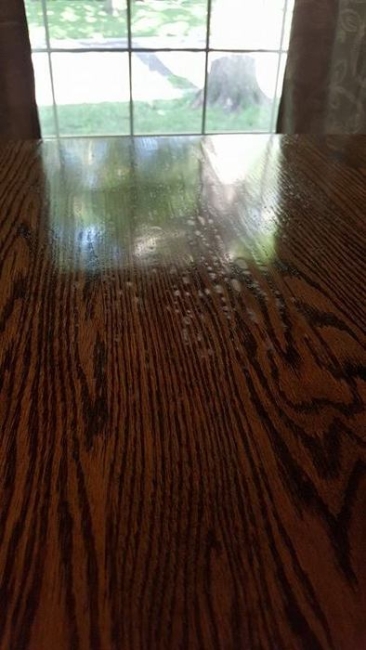The problem areas on your table are probably caused by surface contamination from oils, waxes or cleaning products used over the years. Contaminants from dusting sprays that contain silicone will also impact the appearance and adherence of a finish - silicone is almost impossible to remove. Oil soaps and wax can also cause adhesion failures. This may be why the finish is performing differently on the leaves vs the table top. Adhesion failure is often more obvious in the deepest patterns of grain because the contamination is driven deep into the grain.
Unfortunately, even though you sanded the table down to raw wood, sanding alone will not remove this type of contamination. In fact, sometimes the friction heat of sanding will drive contaminants deeper into the grain.
You have two options, and we recommend the first:
- Strip, sand and refinish the table. Use a strong solvent such as a paint stripper and, brushing the surface with a soft brass brush to clean out the grain. Follow this by cleaning with 0000 Medium steel wool and mineral spirits.
- Buff the existing finish with 0000 steel wool and mineral spirits, particularly in the affected areas, and then re-apply several more coats of Arm-R-Seal
Photo of Arm-R-Seal blotching on a surface:
